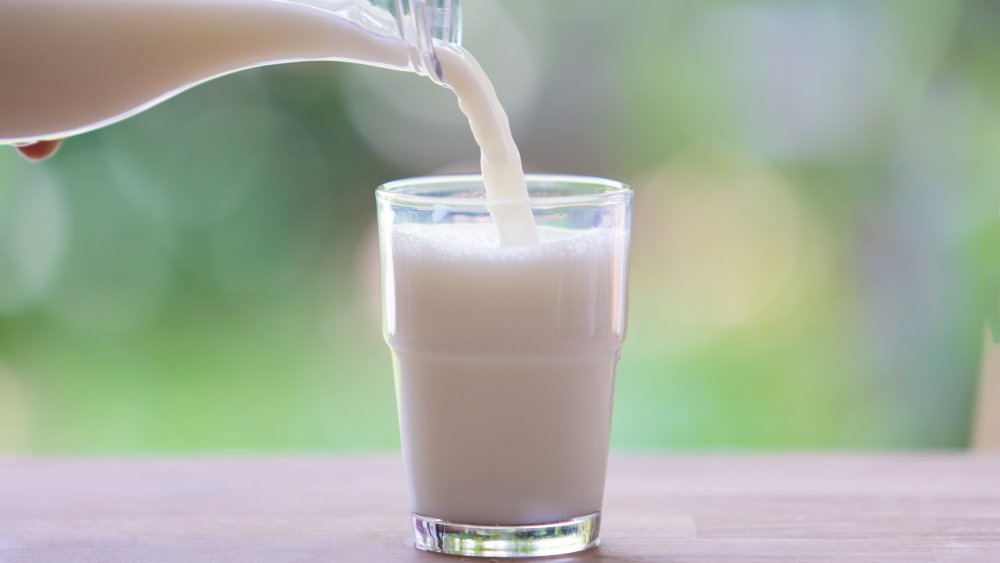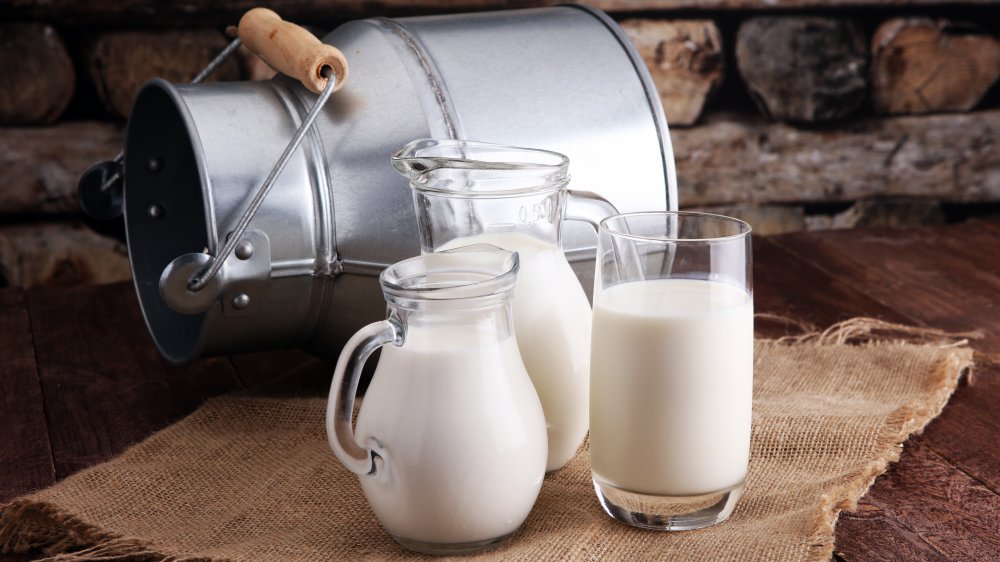The Real Reason Europe Doesn't Refrigerate Milk
If you're like many people living in the United States, the first thing you do when you get home from grocery shopping is put away your milk in the refrigerator, but it might come as a shock to you that people living in most other countries, according to Reader's Digest, don't chill their milk at all.
In Europe and other areas of the world, people store their unopened containers of milk at room temperature, and the milk inside remains completely safe to drink. In fact, Mental Floss reports that in Europe and other parts of the world, supermarkets don't even refrigerate milk, stocking it at room temperature alongside other shelf-stable items.
The reason for this difference in storing methods is that milk is pasteurized differently in the United States and Canada than it is in other places. Pasteurization, named after Louis Pasteur who discovered the method, is the process of heating liquid to kill off harmful bacteria. Pasteur developed this principle for use on beer, and later German scientist Franz von Soxhlet realized it could be applied to dairy products as well, which at the time were known for causing diphtheria and tuberculosis, making them safer to drink.
Different pasteurization methods produce different results
Mental Floss reports that in the United States and Canada, milk producers use the HTST (or the high-temperature short-time) method of pasteurization. This method, as the name suggests, uses a high temperature over a short period of time to kill bacteria in large batches. HTST is very efficient, but allows bacteria to eventually return, causing milk pasteurized this way to expire between seven to 10 days after opening.
Europe and most of the rest of the world instead use the UHT (or ultra-heat-treated) method of pasteurization. The UHT process exposes milk to a higher temperature for a shorter period of time than HTST. Dairy pasteurized using the UHT method can be kept at room temperature for up to six months unopened, but still must be refrigerated after opening.
The reason Americans are resistant to drinking UHT pasteurized milk appears to be based on two issues. One claim is that the UHT milk, because the high heat used in the process burns off some of the naturally occurring sugar, tastes different from HTST milk. Another possible reason for the resistance is that people in the United States and Canada are just used to cold milk, and the idea of purchasing and consuming shelf-stable milk is unappealing.

